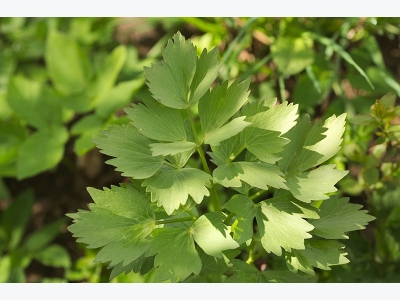Cropped: How to Grow Lovage

Lovage looks like flat-leaf parsley, but its flavor calls to mind celery. You can also market the fennel-esque seeds. Shutterstock
If René Redzepi is into something, can the rest of us be far behind?
The influential Danish chef has relied on lovage’s strong celery-like flavor to add character to warm salads, icy granitas, even savory donuts at his Copenhagen restaurant, Noma. (And when he shutters the place later this year to make way for an urban farm, you can bet Levisticum officinale will be among the crops.)
Here in the United States, Alice Waters spices up burgers and meatballs with the herb, while Stacey Givens of the Side Yard Farm & Kitchen in Portland, Oregon, purées the leaves into a pesto and incorporates the crunchy seeds into Bloody Marys. The good news for growers in culinary-forward markets: A lovage plant can reach heights of 6 feet within a single year, yielding about a pound of leaves per week from spring into fall.
Planting
Hardy in Zones 4–8, this herbaceous perennial can be difficult to start from seed. Patience proves key: Instead of the usual week or so, lovage seeds can take up to 20 days to germinate, and the seedlings shouldn’t be transplanted outdoors until night temperatures reach a consistent 60°F. Choose a site with well drained soil that receives full sun or only partial shade, and space the plants at least 18 inches apart.
Harvesting
Though it’s fine to snip a few leaves that first summer, avoid the temptation to overharvest, so the plant can conserve energy for overwintering. The following year, you can go to town, snipping the outer leaves, which will resprout, throughout the growing season. Cut the center stalk when it flowers, to prevent the plant from going to seed (unless, of course, you want to harvest the seeds for cooking or planting).
Marketing
Most growers sell the leaves fresh, in small bunches, but dried leaves will appeal to purveyors of teas and medicinal tinctures. The seeds can be marketed as an alternative to fennel.
The Bottom Line
Given lovage’s strong flavor and prolific nature, the specialty herb doesn’t lend itself to largescale production, but it can be a lucrative and incredibly low-maintenance bit player in a small, diversified operation. So instead of the usual acre, we’ve assumed a 15-foot-square planting area for the numbers below.
Cost per 200-count seed packet: $3–$4
Cost per seedling: $3–$4
Plants per 15-foot-square bed: 7
Harvest per 15-foot-square bed: 10–15 pounds of fresh leaves and stems per week in late spring to fall, depending on climate
Price per pound: $15 (though most growers sell the herb in small bunches of about 1/4 pound, priced at $3 or $4)
Net revenue per 15-foot-square bed: $2,400–$3,870
Effective life: A decade or even longer, if roots are divided and replanted every four years
Related news
 How to Grow Your Own Tomatoes Part 4: Disease Prevention
How to Grow Your Own Tomatoes Part 4: Disease Prevention Tomatoes are prone to a laundry list of diseases, including viral, bacterial and fungal assailants. Growers in the eastern half of the continent are almost sure
 How to Grow Your Own Tomatoes, Part 5: Harvesting
How to Grow Your Own Tomatoes, Part 5: Harvesting Within two months of plunking tomato seedlings in the ground, the fruit should be filling out and starting to turn color.
 How to Grow Your Own Tomatoes, Part 6: Saving Seeds
How to Grow Your Own Tomatoes, Part 6: Saving Seeds If you plan to save seed from more than one variety, be sure to label seeds clearly throughout the process. How to Grow Your Own Tomatoes, Part 6: Saving Seeds